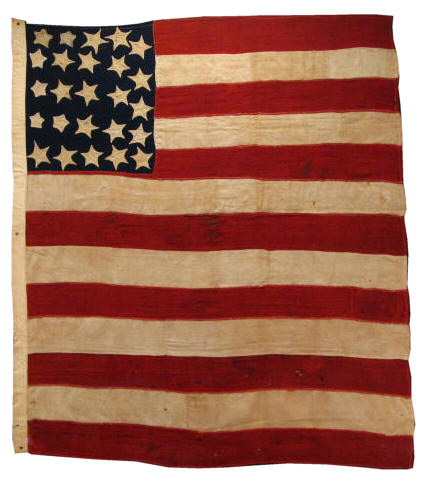
This American Flag is one of the earliest
examples of the American flag
known to exist. There are perhaps a dozen
or so stars and stripes that are reasonably
attributable to the era of the War of 1812 or
earlier, and this is one of them.
This 25 star American
national flag appears to have begun life with 19 stars,
to which groups of 2 stars and 4 stars were subsequently
added. You can see the original stars (with longer
pointy arms) were sewn by
a different hand than the six stars added later.
Under magnification, it is evident that
the linen cloth used for the 19 original stars
matches the linen cloth used for the flag's
white stripes.
The most striking
attribute of the flag is its bold stripes,
which seem to have priority over the small
canton of stars. Benjamin Franklin and
John Adams, as ambassadors in Paris, in
answering European inquiries about the American
flag, placed first emphasis on stripes, casually
describing the canton as “a small square, in the
upper angle next to the staff.” The "broad
stripes" were a central fixture of early
American flags, and even Francis Scott Key gave
them priority in the Star Spangled Banner,
hailing the "broad stripes and bright stars".
This flag, from the same era as the Star
Spangled Banner, is a beautiful example of early
flag making and is an outstanding representation
of one of the earliest known Stars & Stripes to
have survived nearly 200 years.
|

